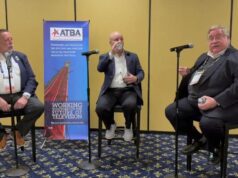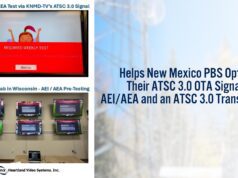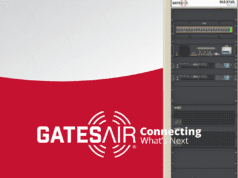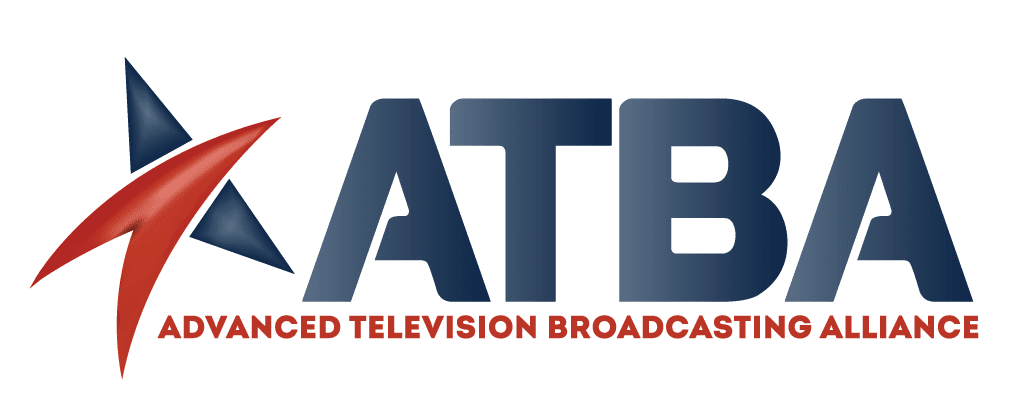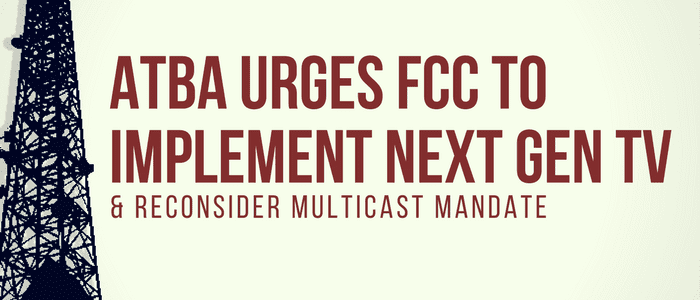
ATBA has announced its support in favor of the FCC allowing television broadcasters to use ATSC 3.0 following the Commission’s tentative conclusion in a document released May 9, 2017.
“The Advanced Television Broadcasting Alliance (“ATBA”) strongly supports the Commission’s tentative conclusion to permit broadcasters to use ATSC 3.0 in lieu of the existing ATSC A/53 standard, which is wholly inadequate to meeting the needs of today’s and tomorrow’s consumers,” the comments read. “We urge the Commission to move promptly to authorize use of ATSC 3.0 with minimal conditions and restrictions.”
ATBA goes on to address two aspects of the Commission’s conclusions in the Notice of Proposed Rulemaking, one in which they agree and another in which there is discord.
In the document, the FCC states a proposal for each station that carries ATSC 3.0 to also arrange for an ATSC 1.0 simulcast. In this conclusion, ATBA feels a simulcast may be more harmful than helpful.
“Although ATBA appreciates the importance of local simulcasting, both for viewers and because broadcasters rely on having the ability to reach all viewers with their coverage areas, an inflexible simulcasting mandate will frustrate, and may well prevent, the rapid introduction of Next Gen TV service,” the comments stated.
According to ATBA, LPTV stations again are in the cross hairs if a simulcast mandate becomes reality.
“The impact on LPTV stations would be even more harsh: many, and perhaps most, LPTV stations do not have substantial contour overlap with another LPTV station. And with full power stations challenged to arrange simulcasting among themselves (and with LPTV stations unable to provide meaningful reciprocity of coverage), it is unlikely that LPTV stations will be able to join full power stations in market-wide plans.”
As the fallout over the Spectrum Auction continues to drag on, many LPTV stations have focused on the technological advances in ATSC 3.0 to help them continue their broadcast goals while fitting into the post-auction era.
“No station, low power or full power, should be denied the opportunity to deploy an innovative new technology simply because all spectrum for transition companion channels has been re-allocated to other uses and cross-hosting ATSC 1.0 and 3.0 broadcasts is not feasible,” the comments stated.
The comments also add that should simulcasting happen, it should not come with heavy restrictions and regulations in regards to content and subject matter. “Broadcasters will make the best judgments under circumstances of their specific markets, rights considerations, available resources, and the desire to introduce new features that may not be conducive to simulcasting,” the comments stated.
The FCC, under the proposal, also reached a tentative conclusion that a Next Gen TV tuner is not necessary at this time; however, the Commission is considering whether and when televisions should carry the Next Gen TV signals.
ATBA is in full agreement with this alternative approach, especially in connection with preserving LPTV service.
“Repacking following the incentive auction will displace thousands of LPTV stations, which will be required to find new channels, if available at all, and build new facilities,” the comments stated. “The more flexible characteristics of Next Gen TV (including synchronized lower power sites) may allow LPTV stations to find spectrum for displacement channels in places where a displacement channel would otherwise be impossible.”
Early access to ATSC 3.0 for LPTV stations would also mean creating competitive and enhanced services for their viewers.
“Low power stations are a conduit for and the prime example of local programming access,” the comments stated. “As such, they are uniquely situated to provide local emergency warning to local viewers – a service that is markedly enhanced by Next Gen TV capabilities.”
“Ensuring that ATSC 3.0 signals can be received on the devices consumers use to watch television today is critically important to bringing the great leap of innovation inherent in ATSC 3.0, especially including its advance emergency alerting capabilities, to the American public,” the comments stated.
The comments go on to share ATSC 3.0 also enhances the ability to stream local content to mobile devices, hinting at the trend of viewing mobile content and that television programmers are picking up on the trend and pushing their content to the small screen.
This includes tablets and mobile phones that have the capability to receive both broadcast pictures and sound simultaneously. ATBA feels this adequately meets the standard for ACRA and therefore should be included in an update to receive ATSC 3.0
As for flat screen televisions, the upgrade would be simple with an HDMI dongle or through a home gateway for smart screens. For most current gen smart phones and tablets,receiving ATSC 3.0 would be possible since, according to the comments, most devices contain the necessary “RF front end receiver, hardware and software to decode and process audiovisual programming, and high resolution screens and audio outputs that in may cases are more technically capable than flat-screen television sets.”
“The Commission should exercise its broad authority under the ACRA to require that devices that are designed and marketed to receive and display such television programming, and which include an RF front end, video and audio decoding and processing capability, and high resolution screens and audio systems, must include the ATSC 3.0 receive capability,” the comments stated.
As demand grows for mobile content, ATBA feels that the FCC could solve a repeat of the first gen crisis that occurred while implementing UHF signals and then again for digital broadcast. By implementing ATSC 3.0 now, and by including small screen devices into the ATSC 3.0 must-carry, ATBA suggests this would alleviate the delays of competitive resistance from wireless companies that are joining in on the demand of viewers’ attention and dollars in the wake of the wake of the FCC’s decision to lift netruality.
ATBA concludes the comments by asking the FCC to consider a phase-in model for Next Gen TV not only complies with current FCC standards and regulations, as more stations will seek to switch to new standard as ATSC 1.0 becomes more obsolete.
ATBA also requests that any simulcasting obligation be a “best efforts” requirement and to allow exemptions for LPTV stations to prevent excluding stations because simulcasting is either impossible or impractical.





